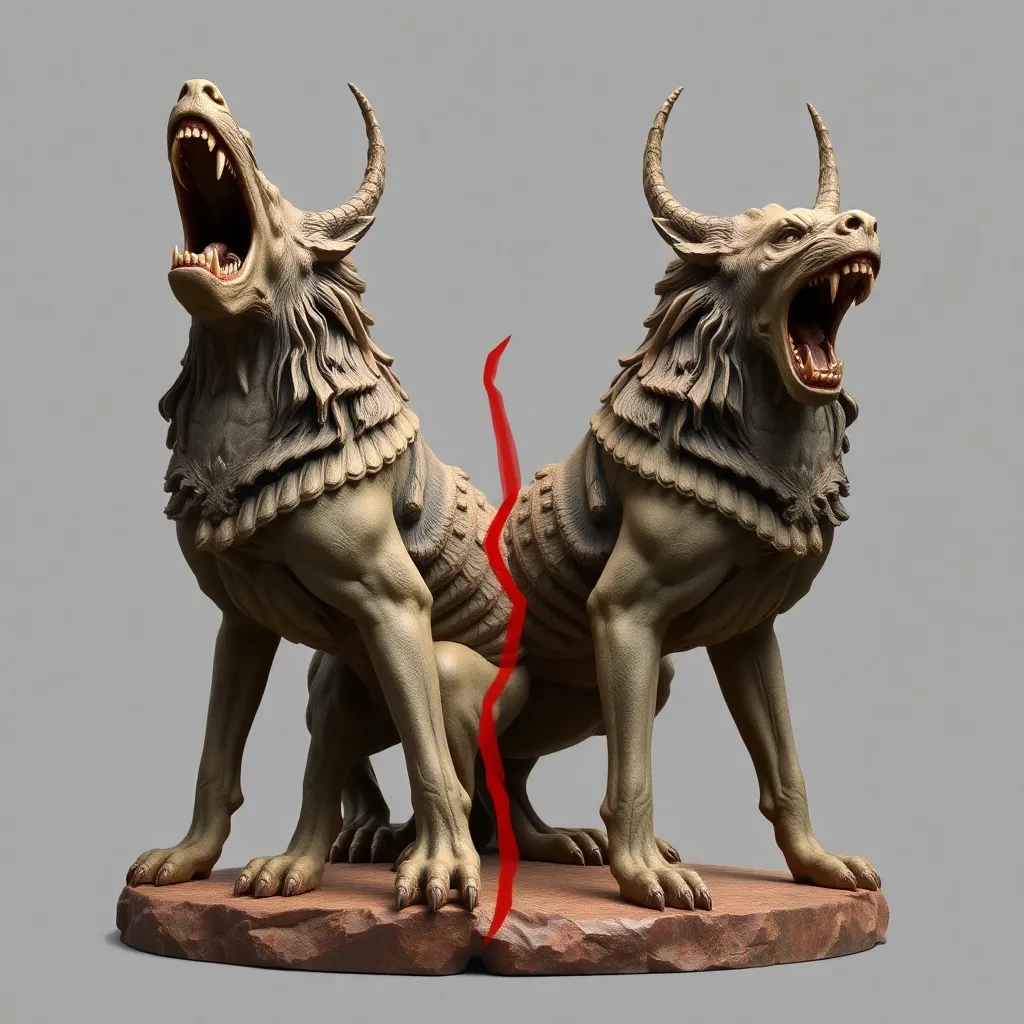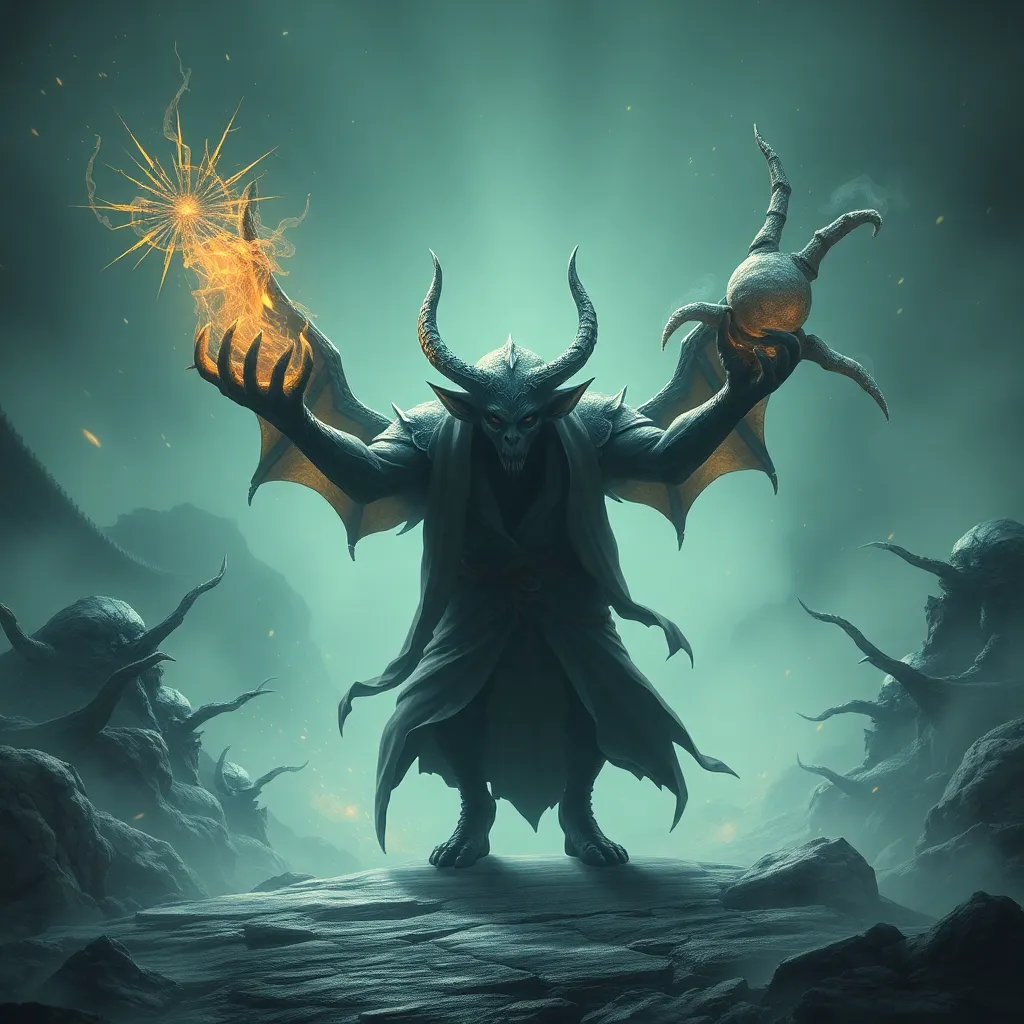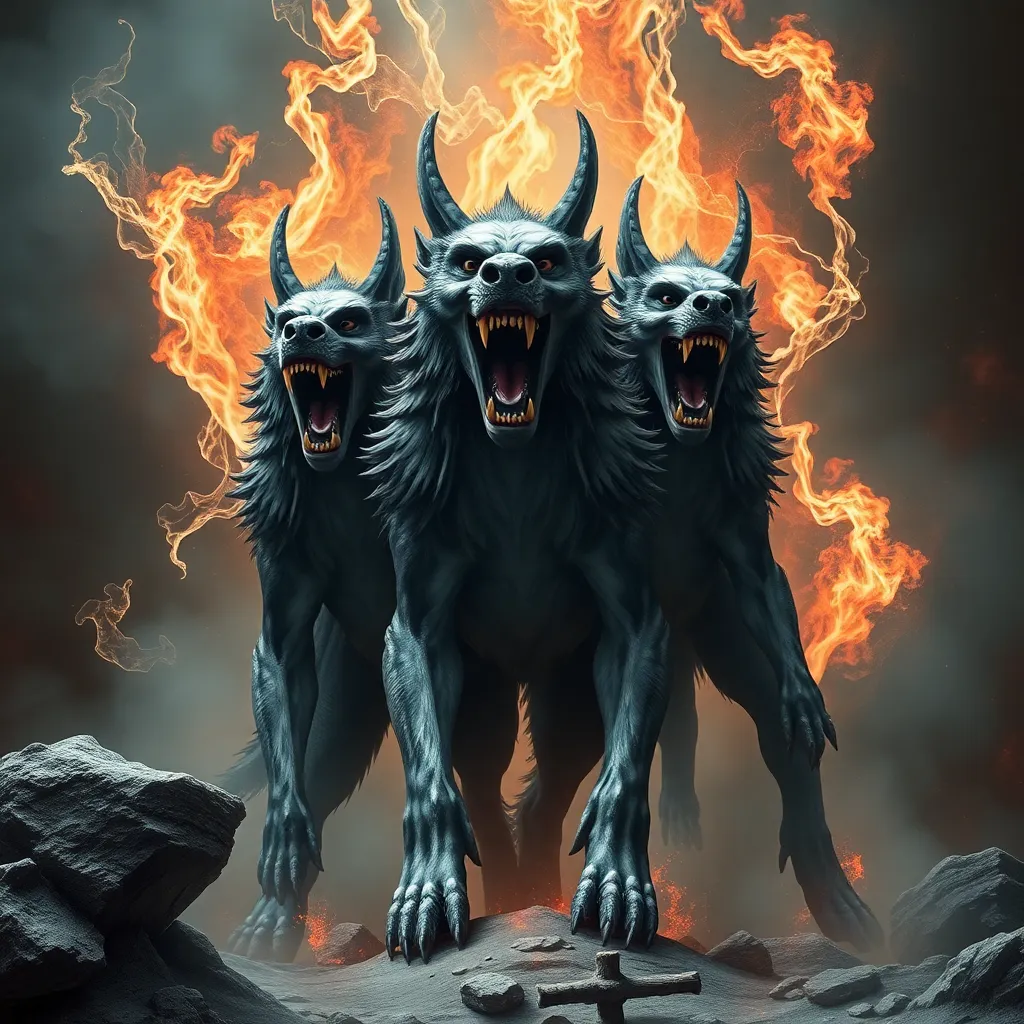From Greek to Roman: Tracing the Transformation of the Cerberus Myth
I. Introduction
The myth of Cerberus, the fearsome three-headed dog, originates from Greek mythology, where he serves as the guardian of the Underworld. His significance spans across various cultural narratives, symbolizing the boundary between the living and the dead. This article aims to explore the transformation of the Cerberus myth as it transitioned from Greek to Roman interpretations, revealing the nuances of his character and the shifts in symbolism that occurred in the process.
II. Origins of Cerberus in Greek Mythology
Cerberus is often depicted as a monstrous creature with three heads, a serpent for a tail, and numerous snakes protruding from his back. He was born of Echidna and Typhon, two formidable figures in Greek mythology, symbolizing chaos and danger.
As the guardian of the Underworld, Cerberus played a crucial role in ensuring that the dead did not escape and that the living did not intrude. He was tasked with preventing souls from leaving and keeping unwanted visitors at bay. His presence in various myths underscores his importance in the Greek understanding of death and the afterlife.
- Key Myths Involving Cerberus:
- The Twelve Labors of Heracles: Heracles was tasked with capturing Cerberus as his final labor, showcasing the hero’s strength and courage.
- Orpheus and Eurydice: Orpheus encountered Cerberus while attempting to retrieve his wife from the Underworld, illustrating the creature’s role as a formidable barrier.
III. Cerberus in Greek Culture and Religion
Cerberus’s symbolism in Greek beliefs is multifaceted. He embodies the fear of death and the unknown, serving as a reminder of mortality and the inevitability of the afterlife. His presence in art and literature often reflects these themes, emphasizing the tension between life and death.
In Greek art, Cerberus is frequently depicted in vase paintings, reliefs, and sculptures, characterized by his intimidating appearance. These representations often convey the duality of fear and reverence associated with the Underworld.
Furthermore, Cerberus’s connection to Hades, the god of the Underworld, reinforces his role as a protector of the afterlife. In rituals and religious practices, offerings may have been made to appease Cerberus, ensuring safe passage for the deceased.
IV. The Roman Adaptation of Cerberus
As the Roman Empire expanded, it absorbed many elements of Greek mythology, including the figure of Cerberus. Roman mythology adapted Greek figures to fit its cultural narrative, leading to changes in the portrayal of Cerberus.
Roman texts often depict Cerberus with similar attributes but introduce new layers of meaning. While he remains a guardian of the underworld, the focus shifts more towards his role in representing the moral order of society.
The influence of Roman culture brought a more structured view of the afterlife, with Cerberus symbolizing not only fear but also the consequences of one’s actions during life. This adaptation reflected the Roman emphasis on law and order.
V. Cerberus in Roman Literature and Art
Key Roman authors, such as Virgil and Ovid, contributed significantly to the depiction of Cerberus in their works. In Virgil’s “Aeneid,” Cerberus is portrayed as a menacing figure that Aeneas must confront, emphasizing his role as a guardian of the Underworld.
- Visual Representations:
- Roman mosaics and frescoes frequently depict Cerberus, often showcasing him in scenes of the Underworld, reinforcing his intimidating presence.
- Contrasting with Greek art, Roman representations may incorporate elements of realism, making Cerberus appear more lifelike and terrifying.
Comparing these artistic interpretations reveals a shift in focus. While Greek art often emphasized the mythical and fantastical aspects of Cerberus, Roman art portrayed him in a way that highlighted his role within the social order and moral consequences.
VI. Symbolic Shifts: From Greek to Roman Contexts
The transition from Greek to Roman interpretations of Cerberus brings about notable changes in symbolism. In Roman society, Cerberus began to represent not just the fear of death, but also the concept of order versus chaos.
In Roman religious practices, Cerberus was often invoked in contexts related to the afterlife, where adherence to societal and moral codes was emphasized. His role as a guardian became intertwined with the idea of justice and retribution.
Additionally, Cerberus’s association with order and chaos reflects the larger Roman worldview, where maintaining societal structure was of utmost importance. This shift illustrates how myths adapt to resonate with cultural values and beliefs.
VII. Legacy of the Cerberus Myth
The legacy of Cerberus extends far beyond ancient Greece and Rome. His influence can be seen in literature, art, and popular culture throughout history. Cerberus has appeared in various forms in modern media, from literature to films, often symbolizing challenges that must be overcome or the dark side of human nature.
The enduring symbolism of Cerberus as a guardian of the threshold between life and death continues to resonate in contemporary society. His character serves as a reminder of the complexities of life and the inevitability of mortality.
Furthermore, a comparative analysis of Cerberus in various mythologies reveals common themes of guardianship and the afterlife, illustrating how diverse cultures interpret similar ideas through their unique lenses.
VIII. Conclusion
In summary, the transformation of the Cerberus myth from Greek to Roman interpretations highlights the adaptability of mythological figures. While Cerberus retains his core identity as the guardian of the Underworld, the changes in symbolism reflect the shifting cultural contexts of Greece and Rome.
The significance of mythological adaptations lies in their ability to offer insights into the values and beliefs of different societies. Cerberus, as a cultural icon, continues to impact our understanding of life, death, and the moral order, proving that myths are not merely relics of the past, but living narratives that evolve with humanity.
Ultimately, the Cerberus myth exemplifies the enduring power of storytelling and the ways in which cultural narratives shape our perceptions of the world around us.



